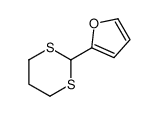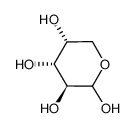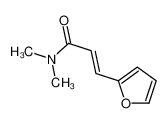1.Identification
1.1 GHS Product identifier
| Product name | furfural |
|---|
1.2 Other means of identification
| Product number | - |
|---|---|
| Other names | 2-furancarboxaldehyde |
1.3 Recommended use of the chemical and restrictions on use
| Identified uses | For industry use only. Food additives -> Flavoring Agents |
|---|---|
| Uses advised against | no data available |
1.4 Supplier's details
| Company | MOLBASE (Shanghai) Biotechnology Co., Ltd. |
|---|---|
| Address | Floor 4 & 5, Building 12, No. 1001 North Qinzhou Road, Xuhui District, Shanghai, China |
| Telephone | +86(21)64956998 |
| Fax | +86(21)54365166 |
1.5 Emergency phone number
| Emergency phone number | +86-400-6021-666 |
|---|---|
| Service hours | Monday to Friday, 9am-5pm (Standard time zone: UTC/GMT +8 hours). |
2.Hazard identification
2.1 Classification of the substance or mixture
Acute toxicity - Oral, Category 3
Acute toxicity - Dermal, Category 4
Skin irritation, Category 2
Eye irritation, Category 2
Acute toxicity - Inhalation, Category 3
Specific target organ toxicity – single exposure, Category 3
Carcinogenicity, Category 2
2.2 GHS label elements, including precautionary statements
| Pictogram(s) |   |
|---|---|
| Signal word | Danger |
| Hazard statement(s) | H301 Toxic if swallowed H312 Harmful in contact with skin H315 Causes skin irritation H319 Causes serious eye irritation H331 Toxic if inhaled H335 May cause respiratory irritation H351 Suspected of causing cancer |
| Precautionary statement(s) | |
| Prevention | P264 Wash ... thoroughly after handling. P270 Do not eat, drink or smoke when using this product. P280 Wear protective gloves/protective clothing/eye protection/face protection. P261 Avoid breathing dust/fume/gas/mist/vapours/spray. P271 Use only outdoors or in a well-ventilated area. P201 Obtain special instructions before use. P202 Do not handle until all safety precautions have been read and understood. |
| Response | P301+P310 IF SWALLOWED: Immediately call a POISON CENTER/doctor/… P321 Specific treatment (see ... on this label). P330 Rinse mouth. P302+P352 IF ON SKIN: Wash with plenty of water/... P312 Call a POISON CENTER/doctor/…if you feel unwell. P362+P364 Take off contaminated clothing and wash it before reuse. P332+P313 If skin irritation occurs: Get medical advice/attention. P305+P351+P338 IF IN EYES: Rinse cautiously with water for several minutes. Remove contact lenses, if present and easy to do. Continue rinsing. P337+P313 If eye irritation persists: Get medical advice/attention. P304+P340 IF INHALED: Remove person to fresh air and keep comfortable for breathing. P311 Call a POISON CENTER/doctor/… P308+P313 IF exposed or concerned: Get medical advice/ attention. |
| Storage | P405 Store locked up. P403+P233 Store in a well-ventilated place. Keep container tightly closed. |
| Disposal | P501 Dispose of contents/container to ... |
2.3 Other hazards which do not result in classification
none
3.Composition/information on ingredients
3.1 Substances
| Chemical name | Common names and synonyms | CAS number | EC number | Concentration |
|---|---|---|---|---|
| furfural | furfural | 98-01-1 | none | 100% |
4.First-aid measures
4.1 Description of necessary first-aid measures
General advice
Consult a physician. Show this safety data sheet to the doctor in attendance.
If inhaled
Fresh air, rest. Refer for medical attention. See Notes.
In case of skin contact
Remove contaminated clothes. Rinse skin with plenty of water or shower. Seek medical attention if you feel unwell.
In case of eye contact
First rinse with plenty of water for several minutes (remove contact lenses if easily possible), then refer for medical attention.
If swallowed
Rinse mouth. Refer for medical attention .
4.2 Most important symptoms/effects, acute and delayed
Vapor may irritate eyes and respiratory system. Liquid irritates skin and may cause dermatitis. (USCG, 1999)
4.3 Indication of immediate medical attention and special treatment needed, if necessary
Basic treatment: Establish a patent airway. Suction if necessary. Watch for signs of respiratory insufficiency and assist ventilations if necessary. Aggressive airway management may be necessary. Administer oxygen by nonrebreather mask at 10 to 15 L/min. Anticipate seizures and treat if necessary ... . Monitor for shock and treat if necessary ... . Monitor for pulmonary edema and treat if necessary ... . For eye contamination, flush eyes immediately with water. Irrigate each eye continuously with normal saline during transport ... . Do not use emetics. For ingestion, rinse mouth and administer 5 m1/kg up to 200 ml of water for dilution if the patient can swallow, has a strong gag reflex, and does not drool. Administer activated charcoal ... . /Aldehydes and Related Compounds/
5.Fire-fighting measures
5.1 Extinguishing media
Suitable extinguishing media
Use water spray, dry chemical, "alcohol resistant" form, or carbon dioxide. use water spray to keep fire-exposed containers cool.
5.2 Specific hazards arising from the chemical
Special Hazards of Combustion Products: Irritating vapors are generated when heated (USCG, 1999)
5.3 Special protective actions for fire-fighters
Wear self-contained breathing apparatus for firefighting if necessary.
6.Accidental release measures
6.1 Personal precautions, protective equipment and emergency procedures
Use personal protective equipment. Avoid dust formation. Avoid breathing vapours, mist or gas. Ensure adequate ventilation. Evacuate personnel to safe areas. Avoid breathing dust. For personal protection see section 8.
6.2 Environmental precautions
Personal protection: filter respirator for organic gases and particulates adapted to the airborne concentration of the substance. Do NOT let this chemical enter the environment. Collect leaking liquid in sealable containers. Absorb remaining liquid in sand or inert absorbent. Then store and dispose of according to local regulations.
6.3 Methods and materials for containment and cleaning up
1. Remove all ignition sources. 2. Ventilate area of spill or leak. 3. For small quantities, absorb on paper towels. Evaporate in a safe place ... Allow sufficient time for evaporating vapors to completely clear the hood ductwork. Burn the paper in a suitable location away from combustible materials. For large quantities, cover with sodium bisulfite, add a small amt of water & mix. ... After 1 hr, flush with large amt of water & wash site with soap solution.
7.Handling and storage
7.1 Precautions for safe handling
Avoid contact with skin and eyes. Avoid formation of dust and aerosols. Avoid exposure - obtain special instructions before use.Provide appropriate exhaust ventilation at places where dust is formed. For precautions see section 2.2.
7.2 Conditions for safe storage, including any incompatibilities
Separated from strong bases, strong acids, strong oxidants and food and feedstuffs. Keep in the dark. Well closed. Ventilation along the floor. Store in an area without drain or sewer access.Keep in air tight container and protect from light
8.Exposure controls/personal protection
8.1 Control parameters
Occupational Exposure limit values
After reviewing available literature, NIOSH provided comments to OSHA on August 1, 1988, regarding the "Proposed Rule on Air Contaminants" (29 CFR 1910, Docket No. H-020). In these comments, NIOSH questioned whether the PELs proposed for furfural (TWA 2 ppm (skin)) were adequate to protect workers from recognized health hazards.
Biological limit values
no data available
8.2 Appropriate engineering controls
Handle in accordance with good industrial hygiene and safety practice. Wash hands before breaks and at the end of workday.
8.3 Individual protection measures, such as personal protective equipment (PPE)
Eye/face protection
Safety glasses with side-shields conforming to EN166. Use equipment for eye protection tested and approved under appropriate government standards such as NIOSH (US) or EN 166(EU).
Skin protection
Wear impervious clothing. The type of protective equipment must be selected according to the concentration and amount of the dangerous substance at the specific workplace. Handle with gloves. Gloves must be inspected prior to use. Use proper glove removal technique(without touching glove's outer surface) to avoid skin contact with this product. Dispose of contaminated gloves after use in accordance with applicable laws and good laboratory practices. Wash and dry hands. The selected protective gloves have to satisfy the specifications of EU Directive 89/686/EEC and the standard EN 374 derived from it.
Respiratory protection
Wear dust mask when handling large quantities.
Thermal hazards
no data available
9.Physical and chemical properties
| Physical state | colourless to reddish-brown oily liquid with almond odour |
|---|---|
| Colour | Colorless, oily liquid ... Turns yellow to brown on exposure to air and light and resinifies |
| Odour | Peculiar odor, somewhat resembling the odor of benzaldehyde |
| Melting point/ freezing point | -37°C(lit.) |
| Boiling point or initial boiling point and boiling range | 160°C |
| Flammability | Class IIIA Combustible Liquid: Fl.P. at or above 60°C and below 93.33°C.Flammable. |
| Lower and upper explosion limit / flammability limit | Lower flammable limit: 2.1% by volume; Upper flammable limit: 19.3% by volume |
| Flash point | 59°C(lit.) |
| Auto-ignition temperature | 392.78°C (USCG, 1999) |
| Decomposition temperature | no data available |
| pH | no data available |
| Kinematic viscosity | 1.587 mPa-s at 25°C |
| Solubility | In water:8.3 g/100 mL |
| Partition coefficient n-octanol/water (log value) | log Kow= 0.41 |
| Vapour pressure | 13.5 mm Hg ( 55 °C) |
| Density and/or relative density | 1.16 |
| Relative vapour density | 3.31 (vs air) |
| Particle characteristics | no data available |
10.Stability and reactivity
10.1 Reactivity
no data available
10.2 Chemical stability
Turns yellow to brown on exposure to air and light and resinifies
10.3 Possibility of hazardous reactions
Flammability of furfural is comparable to that of kerosene or No 1 fuel oil.FURFURAL reacts with sodium hydrogen carbonate. It also can react with strong oxidizers. An exothermic resinification of almost explosive violence can occur upon contact with strong mineral acids or alkalis. It forms condensation products with many types of compounds, including phenol, amines and urea. .
10.4 Conditions to avoid
no data available
10.5 Incompatible materials
...Can react with oxidizing materials.
10.6 Hazardous decomposition products
When heated to decomposition it emits acrid smoke and irritating fumes.
11.Toxicological information
Acute toxicity
- Oral: LD50 Rats oral 127 mg/kg
- Inhalation: LC50 Rat inhalation 756 mg/cu m (189 ppm) /1 hour
- Dermal: no data available
Skin corrosion/irritation
no data available
Serious eye damage/irritation
no data available
Respiratory or skin sensitization
no data available
Germ cell mutagenicity
no data available
Carcinogenicity
Evaluation: There is inadequate evidence in humans for the carcinogenicity of furfural. There is limited evidence in experimental animals for the carcinogenicity of furfural. Overall evaluation: Furfural is not classifiable as to its carcinogenicity to humans (Group 3).
Reproductive toxicity
no data available
STOT-single exposure
no data available
STOT-repeated exposure
no data available
Aspiration hazard
no data available
12.Ecological information
12.1 Toxicity
- Toxicity to fish: LC50 Lepomis macrochirus (Bluegill) 32 mg/L/24 hr; static /formulated product
- Toxicity to daphnia and other aquatic invertebrates: LC50 Daphnia magna (Water flea) 36 mg/L/24 hr; static /formulated product
- Toxicity to algae: no data available
- Toxicity to microorganisms: no data available
12.2 Persistence and degradability
AEROBIC: Furfural, present at 100 mg/L, reached 93.5% of its theoretical BOD in 2 weeks using an activated sludge inoculum at 30 mg/L and the Japanese MITI test(1). In river die-away studies using water taken from the Great Miami, Little Miami, and Ohio Rivers, 1.0 ppm of furfural was completely degraded within 3 days under aerobic conditions(2). The rate of degradation at a higher initial furfural concentration was found to be dependent upon the degree of acclimation, and fully acclimated seeds were round to degrade 25 ppm furfural within 5-12 days(2). At initial concentrations of 1.7-20 and 440 ppm, furfural underwent 46% and 17% theoretical BOD, respectively, in 5 days using a sewage sludge seed under aerobic conditions(3). Furfural at an initial concentration of 300 mg/L, in solution with phenol and N-methyl-2-pyrolidine, was found to undergo 98% removal in a flow-through laboratory bioreactor using an activated sludge inoculum under aerobic conditions(4). At an initial feed concentration of 1,000 mg/L, degradation was also found to occur(4). Furfural at an initial concentration of 200 mg/L COD underwent 96.3% removal in less than 120 hours using a thickened adapted activated sludge under aerobic conditions (5). Furfural was shown to support the aerobic growth of organisms obtained from soil and grown on phenol(6).
12.3 Bioaccumulative potential
An estimated BCF of 3.2 was calculated for furfural(SRC), using a log Kow of 0.41(1) and a regression-derived equation(2). According to a classification scheme(3), this BCF suggests the potential for bioconcentration in aquatic organisms is low(SRC).
12.4 Mobility in soil
The Koc of furfural is estimated as 40(SRC), using a log Kow of 0.41(1) and a regression-derived equation(2). According to a classification scheme(3), this estimated Koc value suggests that furfural is expected to have very high mobility in soil.
12.5 Other adverse effects
no data available
13.Disposal considerations
13.1 Disposal methods
Product
The material can be disposed of by removal to a licensed chemical destruction plant or by controlled incineration with flue gas scrubbing. Do not contaminate water, foodstuffs, feed or seed by storage or disposal. Do not discharge to sewer systems.
Contaminated packaging
Containers can be triply rinsed (or equivalent) and offered for recycling or reconditioning. Alternatively, the packaging can be punctured to make it unusable for other purposes and then be disposed of in a sanitary landfill. Controlled incineration with flue gas scrubbing is possible for combustible packaging materials.
14.Transport information
14.1 UN Number
| ADR/RID: UN1199 | IMDG: UN1199 | IATA: UN1199 |
14.2 UN Proper Shipping Name
| ADR/RID: FURALDEHYDES |
| IMDG: FURALDEHYDES |
| IATA: FURALDEHYDES |
14.3 Transport hazard class(es)
| ADR/RID: 6.1 | IMDG: 6.1 | IATA: 6.1 |
14.4 Packing group, if applicable
| ADR/RID: II | IMDG: II | IATA: II |
14.5 Environmental hazards
| ADR/RID: no | IMDG: no | IATA: no |
14.6 Special precautions for user
no data available
14.7 Transport in bulk according to Annex II of MARPOL 73/78 and the IBC Code
no data available
15.Regulatory information
15.1 Safety, health and environmental regulations specific for the product in question
| Chemical name | Common names and synonyms | CAS number | EC number |
|---|---|---|---|
| furfural | furfural | 98-01-1 | none |
| European Inventory of Existing Commercial Chemical Substances (EINECS) | Listed. | ||
| EC Inventory | Listed. | ||
| United States Toxic Substances Control Act (TSCA) Inventory | Listed. | ||
| China Catalog of Hazardous chemicals 2015 | Listed. | ||
| New Zealand Inventory of Chemicals (NZIoC) | Listed. | ||
| Philippines Inventory of Chemicals and Chemical Substances (PICCS) | Listed. | ||
| Vietnam National Chemical Inventory | Listed. | ||
| Chinese Chemical Inventory of Existing Chemical Substances (China IECSC) | Listed. | ||
16.Other information
Information on revision
| Creation Date | Aug 12, 2017 |
|---|---|
| Revision Date | Aug 12, 2017 |
Abbreviations and acronyms
- CAS: Chemical Abstracts Service
- ADR: European Agreement concerning the International Carriage of Dangerous Goods by Road
- RID: Regulation concerning the International Carriage of Dangerous Goods by Rail
- IMDG: International Maritime Dangerous Goods
- IATA: International Air Transportation Association
- TWA: Time Weighted Average
- STEL: Short term exposure limit
- LC50: Lethal Concentration 50%
- LD50: Lethal Dose 50%
- EC50: Effective Concentration 50%
References
- IPCS - The International Chemical Safety Cards (ICSC), website: http://www.ilo.org/dyn/icsc/showcard.home
- HSDB - Hazardous Substances Data Bank, website: https://toxnet.nlm.nih.gov/newtoxnet/hsdb.htm
- IARC - International Agency for Research on Cancer, website: http://www.iarc.fr/
- eChemPortal - The Global Portal to Information on Chemical Substances by OECD, website: http://www.echemportal.org/echemportal/index?pageID=0&request_locale=en
- CAMEO Chemicals, website: http://cameochemicals.noaa.gov/search/simple
- ChemIDplus, website: http://chem.sis.nlm.nih.gov/chemidplus/chemidlite.jsp
- ERG - Emergency Response Guidebook by U.S. Department of Transportation, website: http://www.phmsa.dot.gov/hazmat/library/erg
- Germany GESTIS-database on hazard substance, website: http://www.dguv.de/ifa/gestis/gestis-stoffdatenbank/index-2.jsp
- ECHA - European Chemicals Agency, website: https://echa.europa.eu/




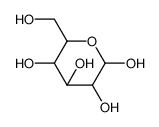

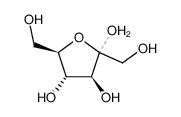
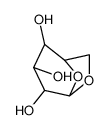


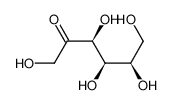
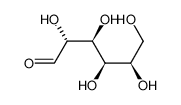
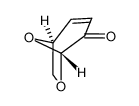

![613-75-2 spectrum, [acetyloxy(furan-2-yl)methyl] acetate](http://saasimg.molbase.net/mol_command/28e85be8ef2340c5a38435031a9bb71d.png)
